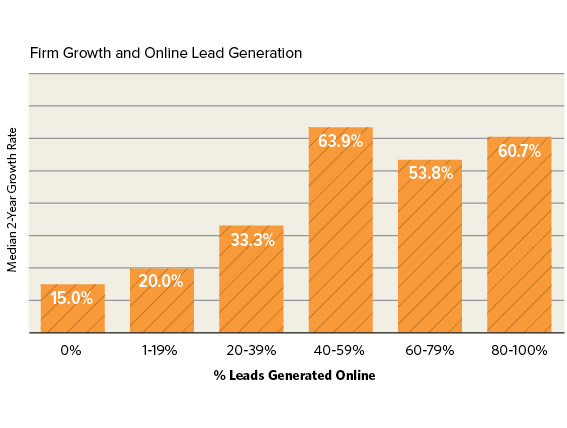Research shows that content is the backbone of successful online marketing. Firms that generate at least 40% of their leads online through a content marketing grow four times faster than firms that don’t.
However, it’s not an easy proposition. And you may look at your results and wonder why your content marketing wasn’t as successful as predicted.

Maybe your managing partner is having trouble seeing the value of content creation and promotion, particularly if inbound leads haven’t increased substantially. So why does content marketing so often fall off track? For starters, I highly encourage you to check out Rand Fishkin’s Slideshare: Why Content Marketing Fails.

If you started by focusing on blogging, you may wonder what additional items to add to your B2B content marketing strategy. Here are five additional techniques to consider:
1) Guest Articles
Reach out to relevant publications to secure guest articles or blog posts helps to gain more visibility to your target audience. The more eyeballs on your content, the more you can demonstrate your thought leadership and get in front of more potential clients.
However, a caution: while it would be ideal if every article placement turned into a client, don’t discount certain publications just because they may not geared towards your exact target audience. If you can add to the conversation on the blog or publication, go for it. Let’s keep expectations in check when it comes to guest placements (remember what Rand said in his Slideshare!).
You can, however, expect to boost your SEO by having the webmaster link back to your site from the article and by increasing referral traffic from readers clicking-through. If you haven’t dabbled in guest outreach, check out these tips.
2) Gated Content
You most likely started with blogging, and that’s a great way to generate consistent content. Consider taking it a step further by publishing a meatier piece of content. Having gated content – where the user provides basic contact information in exchange for downloading the piece of content – can be used as a conversion piece.
Guides – Guides are best used for a specific topic, to answer a question your audience is faced with. These should mostly be written on evergreen topics, as you don’t want to spend all that time writing and designing a guide that will be outdated in a month.
White papers – White papers are usually more technical and a better fit for an experienced reader. You wouldn’t write a white paper on an introductory subject. If your work is highly technical in nature, this can be a good fit.
Research – This is the most time consuming of the three, but can be a great way differentiate your brand. Consider enlisting a partner to conduct joint research. It can help boost an existing partnership and share some of the resources/time a research project will take.
3) Content Calendar
Creating a content calendar will help to plan and organize upcoming content. If you decided to add additional content beyond a blog post, it will help you keep on track so that the guide is completed.
A content calendar will also help if you decide to increase the volume of guest blog posts. Do you have enough posts in the pipeline or need to write more? With additional content being generated, you may need to have others (either internally or outsourced) assist in generating content. Having a calendar to share with others can keep larger projects on track.
4) Webinars
Educating buyers through webinars is one of the top techniques that leads to more business opportunities. Beyond educating and engaging your target audience, webinars also:
- Provide a different medium of educational content
- Increase engagement between your firm’s Visible Experts℠ and audience, especially if you use the last ten minutes for Q&A
- Allow for further down the sales-funnel participants as webinars are a time-commitment, closer to becoming an opportunity
5) Incorporate Email Lead Nurturing
Lastly, if you already have a regular email schedule, consider adding lead nurturing via a CRM as a way to enhance your email campaigns.
Lead nurturing involves setting up a series of relevant, automatic emails based on what the user has downloaded, nurturing the recipient over a period of time (usually about three months) until they are ready to become an opportunity.
Lead nurture sequences can be complex and challenging to set up, so it takes an experienced email marketer and a sophisticated CRM to do the job well. Read more about lead nurture sequences in this Marketing Profs article.
What other items are you adding to your content strategy? Leave a comment below!
Want to learn more? Check out our Content Marketing Guide for Professional Services and find out how to create and implement a B2B content marketing strategy.
This article was syndicated from Business 2 Community: 5 B2B Content Marketing Techniques To Revamp Your Marketing Strategy
More Sales & Marketing articles from Business 2 Community:




